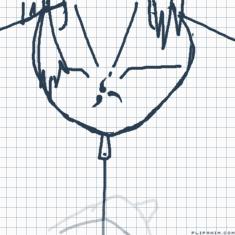Untitled


11 comments

Orchestra[OP]
25.12.2021 19:33
LinkPLEASE ASK QUESTIONS OR COMMENT ON THE ORIGINAL POST LINKING THIS! THANK YOU! SCROLL DOWN TO READ THE INFORMATION :]
Comment removed

The spikes on the Gomitel help direct air flow when gliding, or swimming. Their wings, surprisingly, don’t hinder them when they dive. They can hold their breath for up to two minutes. The flexible spikes are made up from a chitinous material, but aren’t very strong. They are flexible, but are limited when moving in some areas. (IM NOT SKILLED OR TRAINED IN ANATOMY! THIS IS INACCURATELY PRODUCED

The Gomitel have adapted to the night by gaining a sort of night vision, although weak , they can see the majority of the area around them. Gomitel have also developed a bioluminescence in their tails and horns, like, a firefly dragon dog. The Gomitel use this to attract small insects, and scare away predators. Though this doesn’t work all the time. Curious animals like Achivex may be drawn in and attack the Gomitel. They have gained the ability, that when they’re attacked, they can spit up bile onto the predator in order to escape. Disgusting? Check. Efficient? Also check

Gomitel are mainly carnivorous. They live around streams, or swamps, so they can catch small animals. When their primary diet of fish or insects is gone, they scavenge or catch anything they can. Sometimes even foraging for berries or fruits. Their food supply doesn’t really disappear easily, unless there’s a drought, so their population tends to thrive (even if it’s small)

Gomitel are incredibly social. They often live in “swarms”, which is their form of a group. These swarms are made up of 4-16 individual Gomitel. Studies have shown that they often clean each other, sleep near or next to each other in the same trees, or make conversation through a series of chirping and clicking noises. The group will stay together for up to three years, before departing and forming new groups for the next few years. Their lifespan in the wild is 9 - 12 years, with the longest being 18 years in human captivity.








